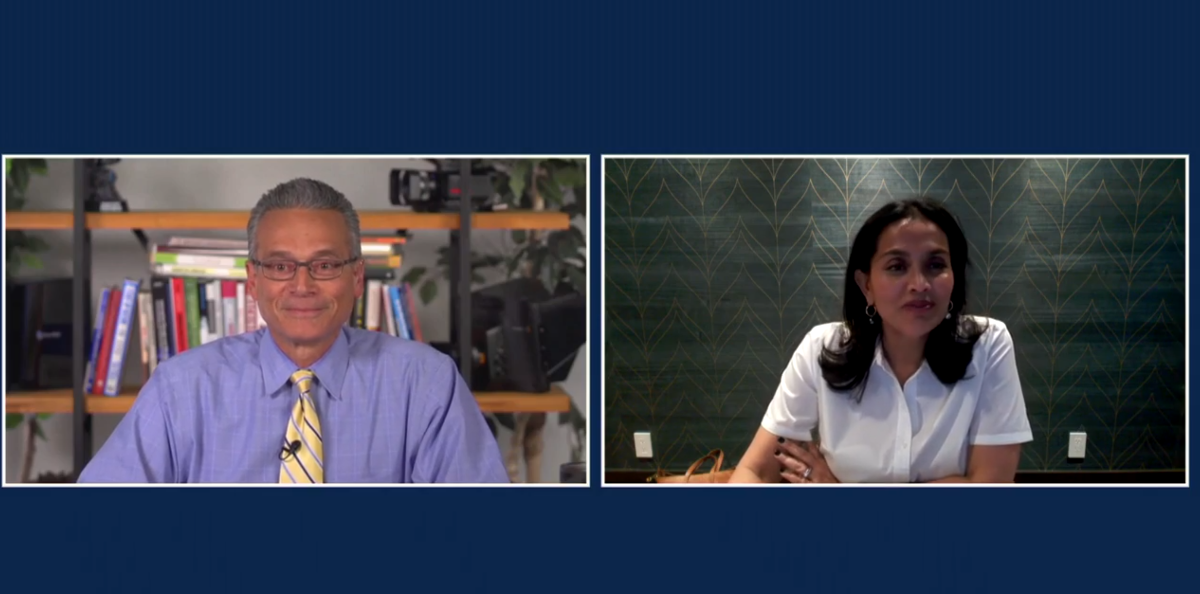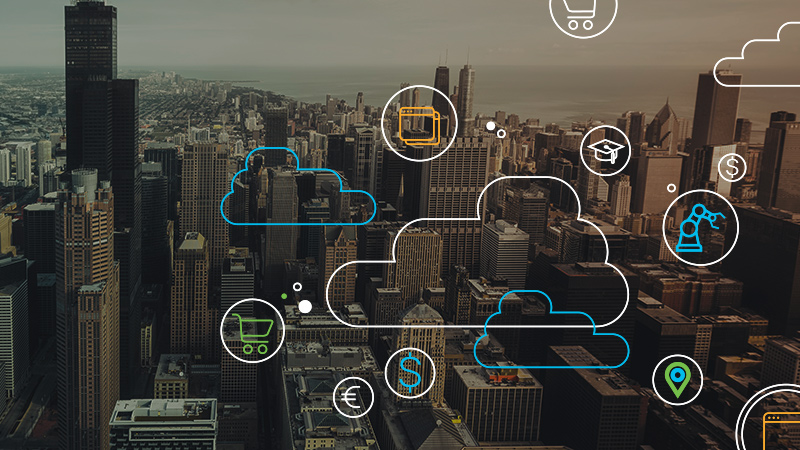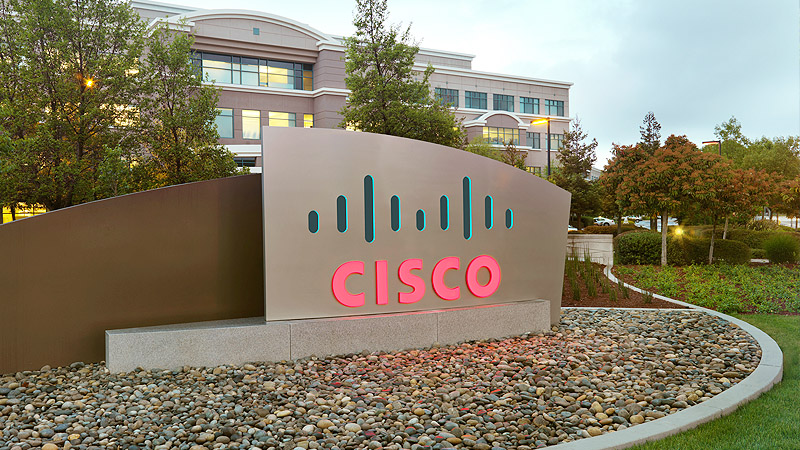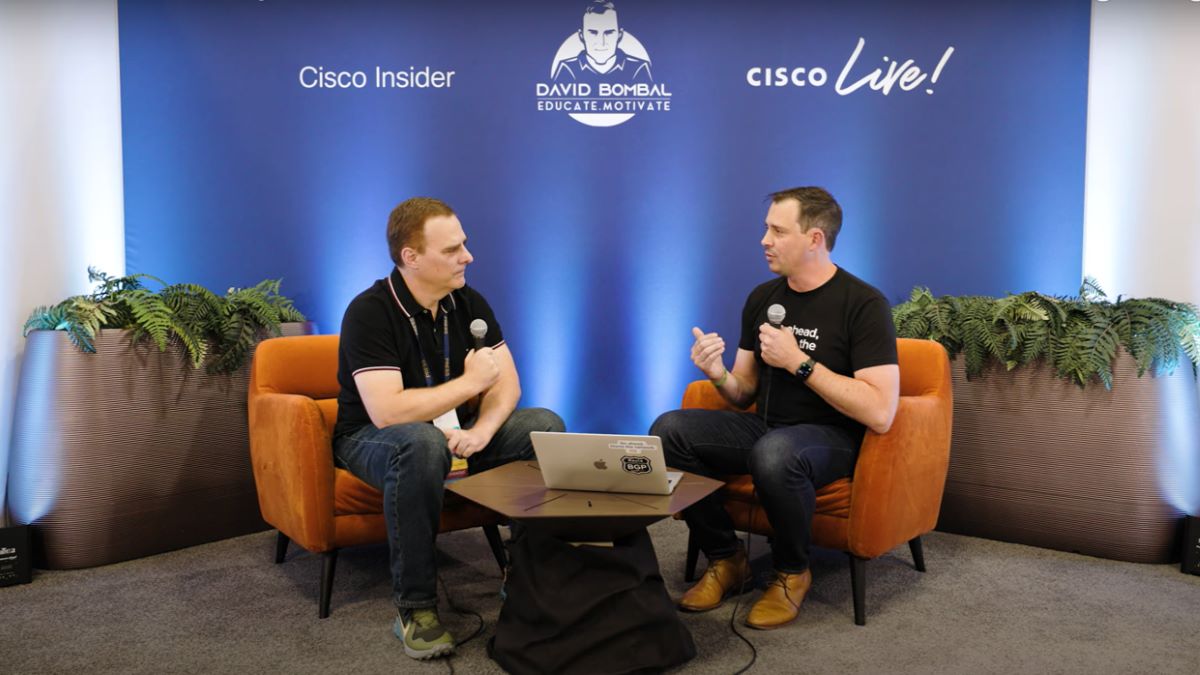Cisco’s 25th annual Partner Summit brought together 19,000 representatives from 152 countries last week. And as with so much of our lives this challenging year, the event was virtual — and cloud made it possible. So, not surprisingly, cloud was a key topic throughout the event — its complexity, its challenges, and above all, its endless potential.
“The power of the cloud experience,” said Liz Centoni, Cisco’s SVP for strategy, emerging technologies, and incubation, “is being able to access innovation from everywhere, whenever you want it.”
In a wide-ranging discussion on how to thrive in a hybrid, multi-cloud, app first world, Centoni spoke with moderator Dave Vellante, the chief analyst for Wikibon and co-host of The Cube. A key theme was around creating solutions for the variety of cloud motions. These include on-premises, multiple clouds, and SaaS environments. Most customers have several motions at once to enable their digital plans and deliver the best application experience. In addition, it’s about simplifying, speed, and providing choice to bring the Cloud Experience across all these environments.

Cloud — and, especially, cloud-based apps and services — open a world of possibilities. They bring the agility, speed, and scalability that today’s businesses demand. But in a multi-cloud, hybrid environment, the multiple tech stacks from many providers add layers of complexity and security gaps, all of which can slow things down — and stress IT teams.
The conversation began with Centoni sharing some insights into the pressures that Cisco customers are feeling. She stressed that customers don’t want to think about clouds and SaaS and on-premises as separate environments that they have to manage. They want it to be a single hybrid-development platform.
“Customers are saying, ‘okay, I need to have the speed and agility to consume services from multiple places, the flexibility to be able to do that. I need to have a consistent cloud experience across all of my environments,’ ” Centoni said. “So, they want us to simplify, bring in more automation, the agility, the flexibility, the consistent way to manage all of these environments.”
See also: Helping our customers harness the power of the cloud
Everyone wants to deliver the best application experience for their internal and external users. But to do that, app-operator and-infra operator teams need to work together.
“If you look at most teams today,” she said, “they work in silos — the app developers work in their silo, infrastructure and networking teams work in their silo. And they all use the tools that are most appropriate for the job that they do. Because you don’t want them using the same tool and having copious amounts of data that don't make sense for their job role. But if you can provide unified correlated data sets, same context, and common vocabulary, you can break down the siloes and address performance issues before it impacts the end user.”
Seeing it all, from apps to infrastructure
As things grow ever more complex, IT still needs to observe, metric, and troubleshoot everything happening in their network and ecosystem, including clouds. Centoni shared some of Cisco’s solutions for meeting customers’ needs for full-stack observability, from the applications to the infrastructure and network.
“We provide true full-stack observability between applications, infrastructure, network and internet with the integrations between AppDynamics and ThousandEyes and Intersight,” she said. “So, you need a portfolio, where you’re providing those unified data sets and context and insights across the whole stack and across multiple clouds and on premises as well.”
As Vellante stressed, the pandemic response depended greatly on cloud. But that also exposed security gaps in some organizations. So, how best to approach security in a complex, multi-cloud environment?
“Security is exacerbated as more and more people are working from home,” Centoni responded. “You have more users that are distributed. Your applications are much more distributed than before. So, Zero Trust architecture absolutely becomes critical, identity and access management absolutely become critical, a platform in terms of where you can do detection and remediation becomes critical. You need to have multiple tools that come together.”
“When you look at our portfolio of products,” she added, “we are able to cover a breadth of what’s needed to secure across users, devices, network, cloud, and applications, but under a single platform that gives you that simplicity and the best threat efficacy.”
A trusted partner
Centoni then shared what she believes sets Cisco’s solutions apart from the competition.
“Customers trust us to do what is right for them,” she stressed. “With security and privacy, but also in terms of understanding and bringing the right solution to them because of the breadth of the portfolio that we have. We look to understand our customer’s problem. The second one is really around the drive for simplicity. It’s not just about providing them with all the knobs and bells and whistles. And the third one is really around continuing to innovate. And lastly, customers want choice; of clouds, hypervisors and orchestration platforms.”
In the end, cloud solutions are not about the technology, per se, but about the benefits for the organization and its customers. Vallente finished with a question about the key performance indicators that will be most relevant moving forward.
For Centoni, that boiled down to two main KPI’s: resilience of the system from a provider standpoint and the experience of the consumer.
“To me,” she concluded, “it comes down to these two KPIs. Because at the end of the day, applications are becoming the atomic unit for how every company delivers competitiveness. You need to deliver that best experience. And internally you need to look at how you keep your systems resilient and continue to adopt and consume the latest and greatest technologies to drive it.”
###
We welcome the re-use, republication, and distribution of "The Network" content. Please credit us with the following information: Used with the permission of http://thenetwork.cisco.com/.




